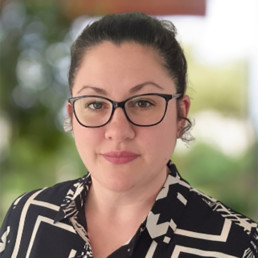
Written by Joanne Robinson
Joanne Robinson, BA, MA, PGCE, FCCT, is the Director for Training and Development at TeachUp, a company specialising in professional development for teachers in the UK and internationally. She has also led a number of teacher training programmes, including an iPGCE and an MA in Education with Pedagogy. Prior to this, she taught in secondary education for 16 years. She is keen to promote inclusive education that centres upon the wellbeing and autonomy of teachers as well as pupils.
I am writing this as an education professional with ADHD. I am the parent of two children, one now adult, both with AuDHD (Autism and ADHD). I have taught many children diagnosed with ASD, ADHD and other neurodivergent conditions. I suspect I have taught many, many more who were not yet diagnosed.
It’s interesting to look back on life after a late diagnosis. It can be quite sad: the things that I found difficult suddenly had a reason, rather than just being proof of inadequacy. People with ADHD tend to overthink things and be incredibly self-critical. I know from reading other accounts of late diagnosis, feeling anger and grief is not uncommon. From my perspective, I understand that how we look at ADHD has evolved significantly over the past few years and I recognise that it isn’t a failing of anyone that I wasn’t identified. It is very complex, even now, to see neurodivergence in others. I didn’t see it in myself, although I had a strong sense of being different.
I masked my way through school and my professional life without even knowing I was doing it. Masking is where we suppress behaviours in order to fit in with our peers and the expectations placed upon us. It takes a significant amount of energy – no wonder I was tired all the time!
I think this is a key point: we will encounter pupils who aren’t diagnosed, who don’t even know that they are neurodivergent yet. They don’t know they are masking. But they do know things seem harder for them.
As teachers, we really need to be cognisant of this. The pressure they are under might manifest in different ways: headaches, performance anxiety, not meeting expectations in written work when verbally they are very strong, daydreaming, fidgeting or doodling are just a few potential signs.
Part of the challenge schools face is the quickly-changing landscape of neurodivergence. We are transforming our understanding of what conditions like ADHD and autism are. Several decades ago, we didn’t think girls could have autism. ADHD was seen as a condition of naughty boys. Little did we know that the daydreaming girl, who tended to be a bit talkative at times, could possibly have ADHD too.
As I’ve told people about my diagnosis, some still seem incredulous. I’ve come across many education professionals who thought ADHD was a concocted condition, formulated as an excuse for bad behaviour and bad parenting. The ones who did think it was real were very much in the naughty-boy camp, not understanding that it can manifest in different ways. Recent media coverage seems to promote the idea that we are all a bit ADHD from looking at our phones for too long, showing no empathy or understanding of some of the complex difficulties having ADHD can bring.
The reason why educators need to be aware of potential neurodivergence is because school can be incredibly hard for these children, to the point that many stop coming as they hit their teenage years. The mental health implications are damning. The pressure of masking every day is exhausting. This is where it becomes vital to listen to parents: their behaviour at home will be different as the mask will come off where the child feels secure. Too many times I have heard teachers, and even a SENCO, say, “Well, he’s fine in school”. He probably is! It doesn’t mean he’s the same at home and that things aren’t profoundly difficult for him. He may, without support mechanisms in place, simply give up.
As teachers, we can’t diagnose children, but we can think about the classroom environment and how we structure tasks to support pupils in our lessons. The diagnosis is partially a mechanism to get support; if we put neurodivergent-friendly adaptions into classrooms, we are addressing potential need rather than waiting for either a diagnosis to happen – which can be unlikely for many – or complete meltdowns and school refusal to occur. There are many resources available to support schools with this, such as the wonderful free section on the ADHD Foundation site, which also encompasses other neurodivergent conditions.
It is vital to note that neurodivergence is not just difficulty. It can bring amazing competencies too, such as creativity, innovative thinking, verbal aptitude, attention to fine detail, passion and authenticity. By having classrooms where we create opportunities to draw on these competencies, whilst limiting some of the factors that bring anxiety and overwhelm, we can help these children to flourish and feel like they belong in school.
If a teacher suspects a child may be exhibiting signs of difficulty, that could possibly be a result of a neurodivergent condition, they should be sharing this with the relevant professional in school, whether a SENCO, Head of Year, or SLT member.
Resources:

